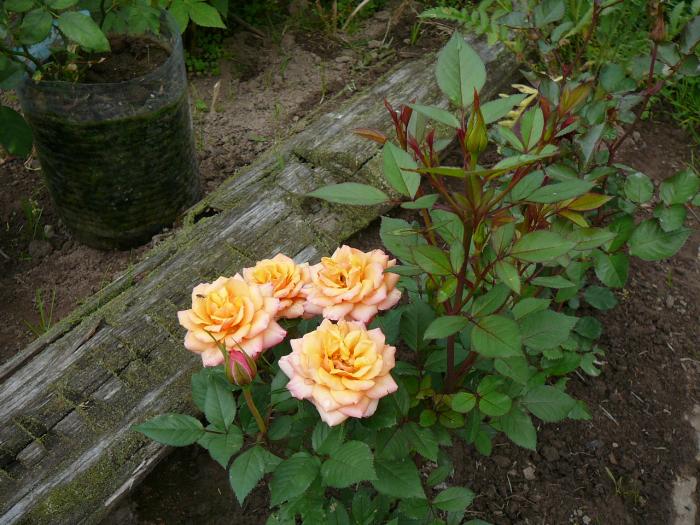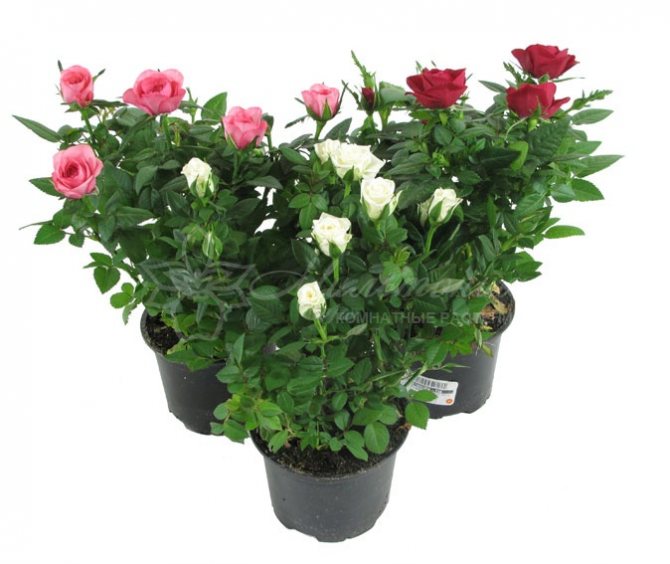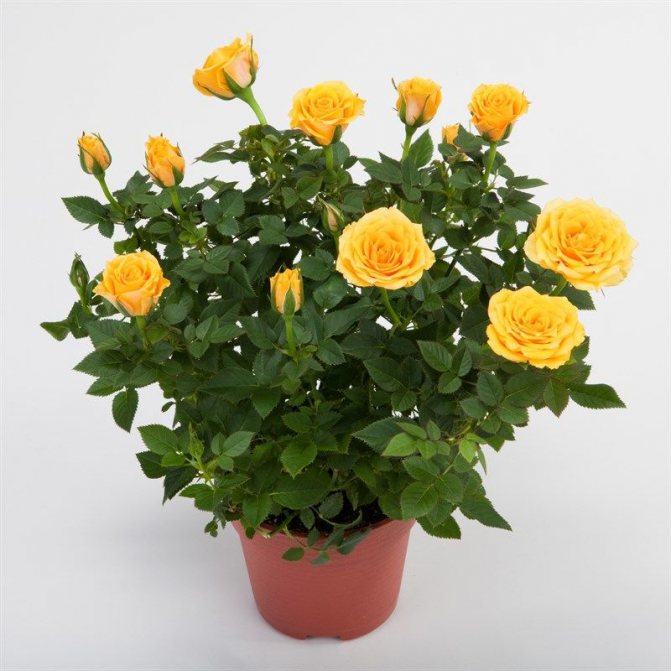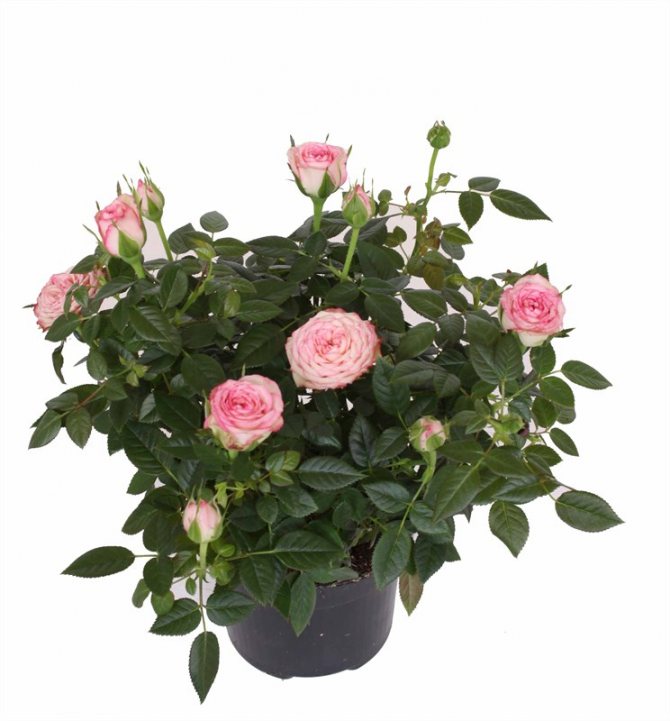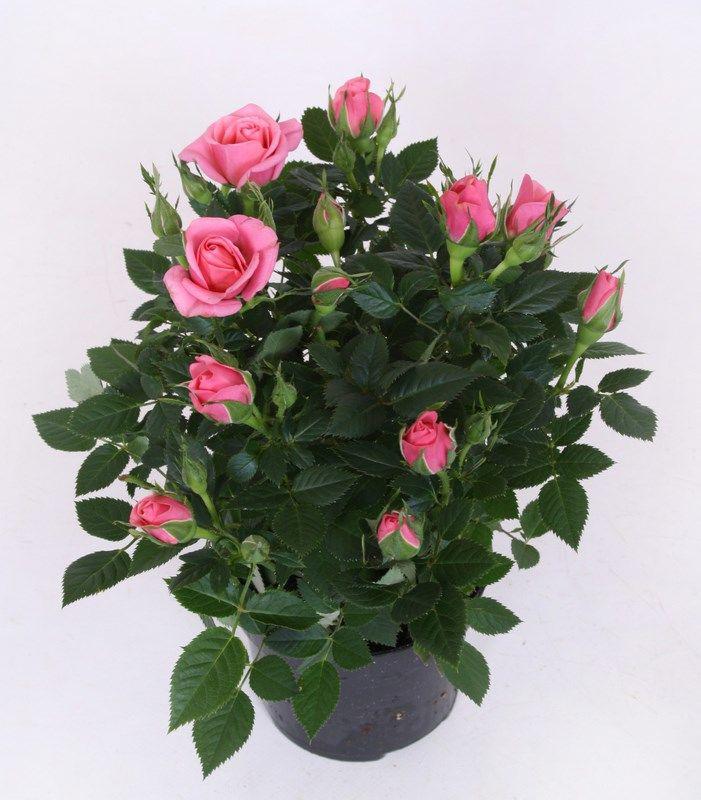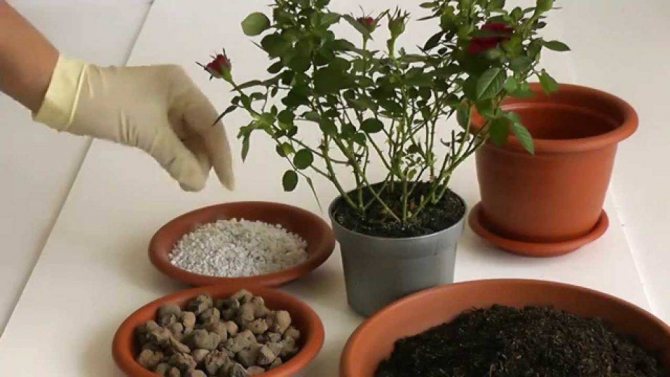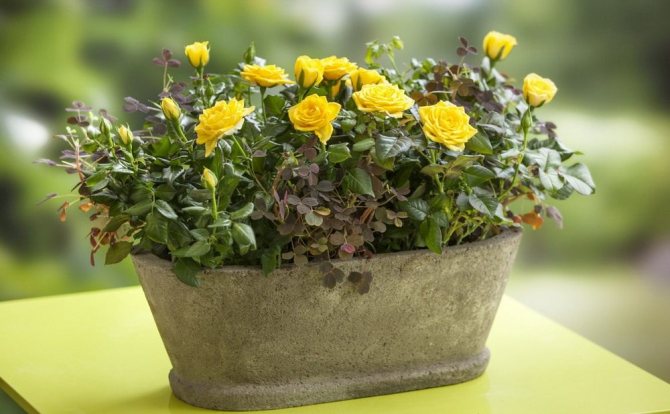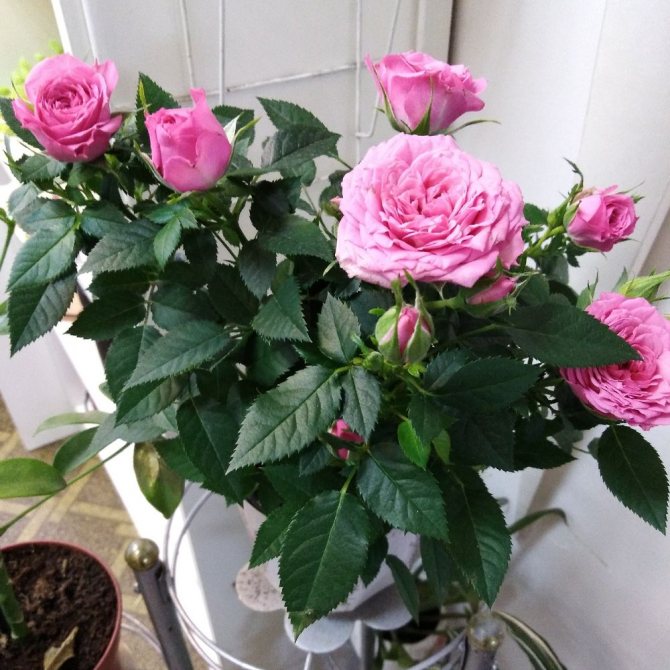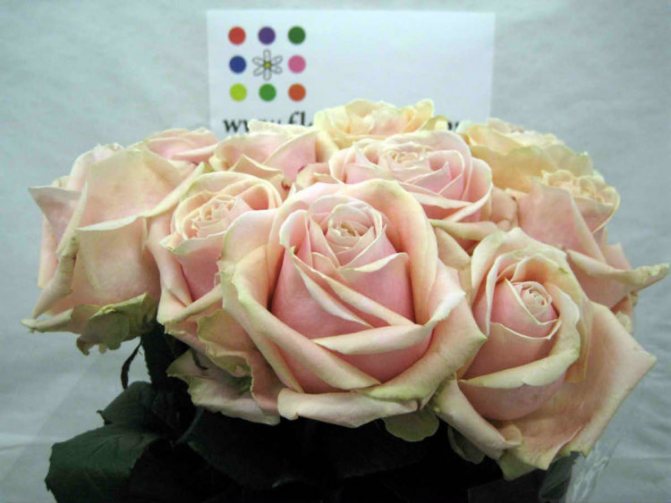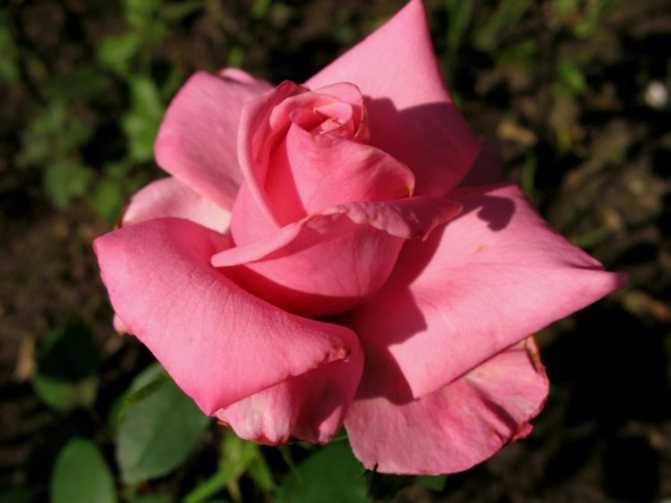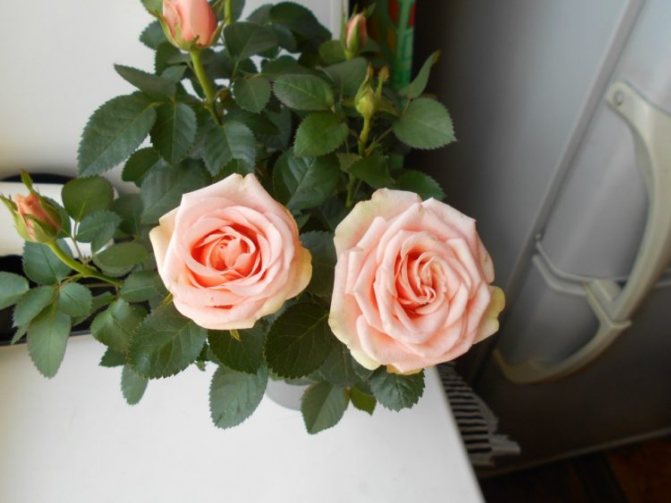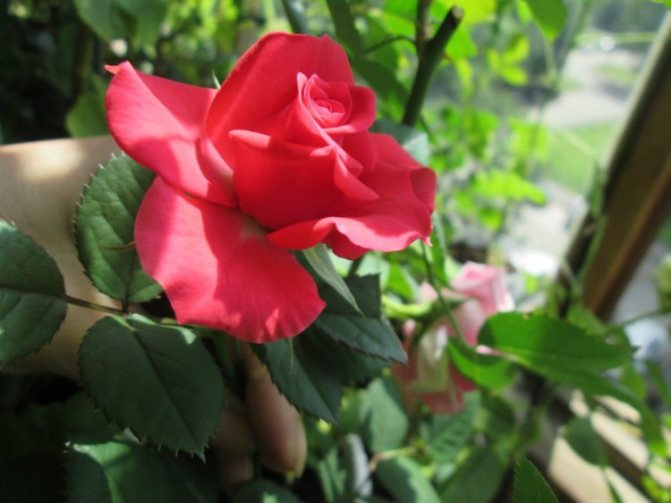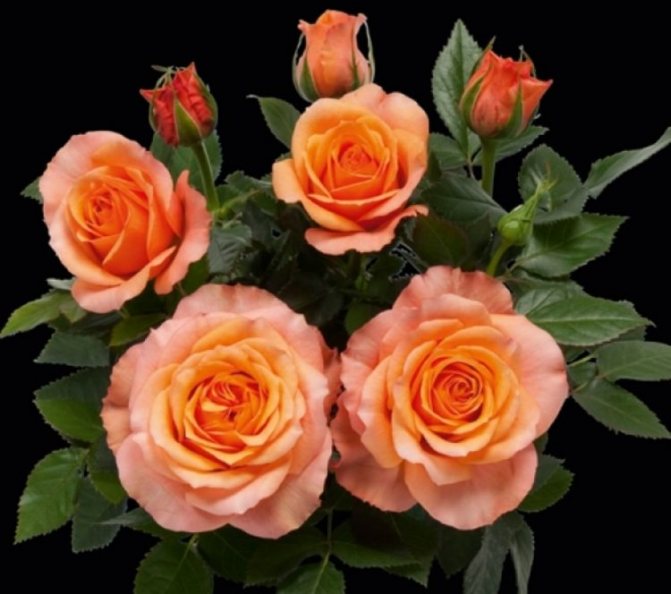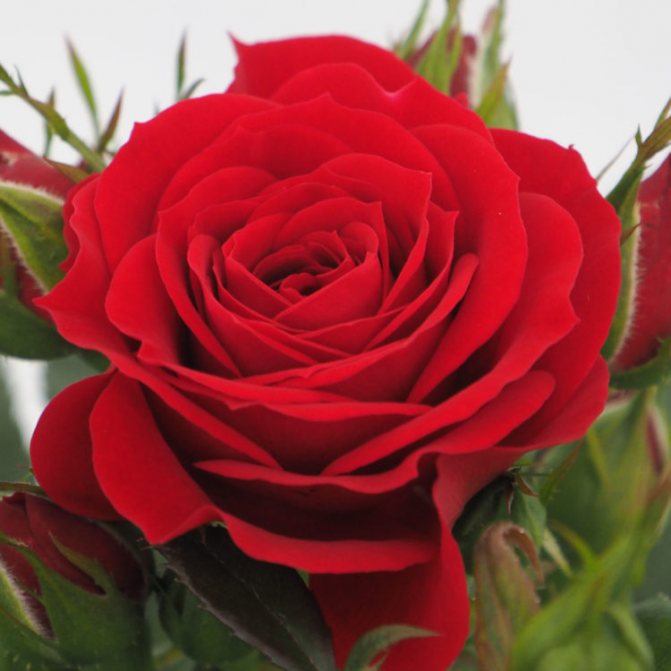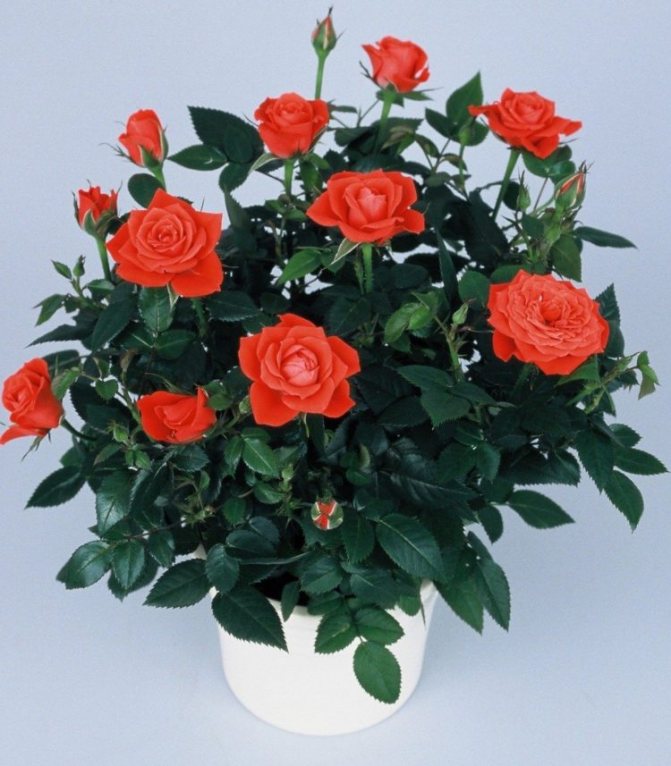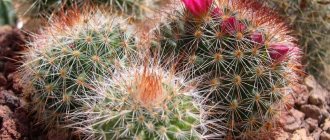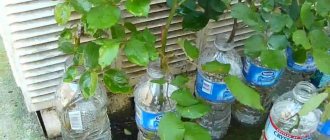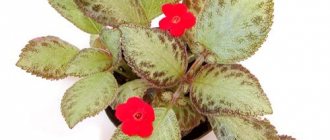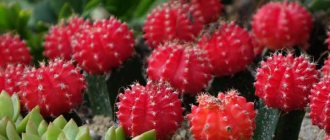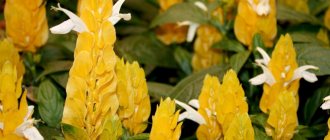The abundance of colors and excellent characteristics of the appearance of the rose allow gardeners to fill their plots with this type of shrub.
A special place in the encyclopedia of rose bushes is occupied by the Cordana rose - a decoration of the house and garden.
Cordana is distinguished by its small, but no less attractive buds that can charm even ordinary people who are not related to crop production.
To properly grow rose varieties, you need to familiarize yourself with how to care for, water and what to do if the flower begins to dry.
About the variety: how to choose the right one
The Kordana rose is a small plant. The height of the bush is 25-30 cm. The size of the flowers is up to 5 cm. The colors of this small beauty are different:
The flowering period lasts from May to October.
Note! Rose Cordana is odorless, so there will be no side effects in the form of allergies.
This rose can be purchased at any flower shop. A flower in a pot is on sale, packed in additional protective material. As many bushes are planted in the pot at once (minimum 3-4). Typically, plants are 2-3 months old from rooting.
It is important to know the main points to look out for before buying a flower.
- Shoots should be of a uniform color without blackening, as black spots indicate the presence of a fungal disease.
- The leaves should be bright green, firm and shiny in appearance. There should be no white bloom, brown spots, which indicates the presence of a disease. Yellow color and shedding of foliage is also a sign of a sick flower.
- It is imperative to check the plant for pests. The most common is the spider mite, which leaves behind a cobweb.
What to do if the leaves dry up and fall
According to the reviews of the owners of such roses, it is important to have time to correctly adapt the planting to indoor or garden conditions.
If this is not done, the shrub instantly withers, leaves fall and the root system dries up.
To make the plant feel great, it is enough to follow simple rules.
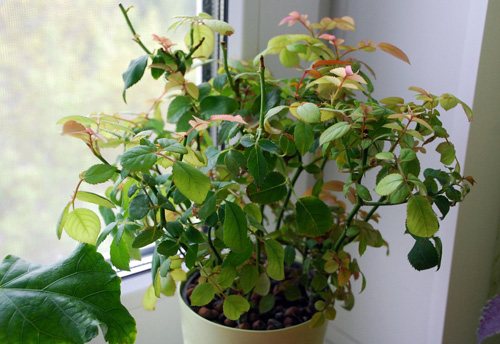
Consider what to do with this problem:
- In 95% of cases, the spider mite becomes the cause of the fall: in order to prevent the appearance of the pest, it is necessary to spray the plantation with acaricide.
- Pay attention to the location of the rose on the windowsill: it is possible that the flower dies due to dry air and being near the battery.
- An overdried or waterlogged lump can also cause this problem - then it is necessary to establish proper watering.
From time to time it is recommended to use dressings specially designed for home varieties of Cordana. The photo shows how beautiful the buds of this plant are.
Features of the Cordana rose: home care after purchase
After the Cordana rose is bought and brought home, caring for it at home begins with a period of adaptation. It is possible that the flower will shed flowers and leaves. The first month is the most difficult and stressful one. It should be waited out, and then the rose blooms again. During the adaptation period, it is recommended:
- Place the rose separately from all plants.If the flower has any diseases and pests, it can infect other indoor plants.
- After the rose is brought home, it is better to rinse it under running warm water. This is worth doing, even if the plant was carefully examined when purchasing and no pests were found on it. This procedure will be an excellent prophylaxis against spider mites.
- During the adaptation period, the rose should be constantly watered. The flower should not be heavily flooded, but drying should also not be allowed.
- Every day the rose should be sprayed with plain water. In the early days, treatment with epin (growth stimulant) can be carried out.
- Treat with a prophylactic drug Aktara. This systemic remedy fights almost all pests that can infect a plant, but its effect does not apply to the Putin tick.
After the acclimatization period has passed, the potted rose can be placed in a permanent place. Basic plant care consists of the following steps.
- The main place for the rose should be as sunny as possible, but direct rays should not fall on the flower. You need to choose a place where the maximum amount of light falls throughout the year.
- Watering is one of the most important aspects of flower care. Water it regularly. The soil should not be too waterlogged, but at the same time not overdried. You can check the condition of the soil as follows: press down on the soil with your finger. If, after this pressure, liquid is released, then the rose does not need watering. If, on the contrary, the finger remains dry, then soil moistening is necessary. Watering is done with water at room temperature on top of the soil. It is imperative to drain the water from the sump if it appears after watering.
- Top dressing. It should be carried out once a week during the active period of budding. The rest of the time, it should be fed once every 2 weeks. As a top dressing for a rose, special fertilizers for flowering plants on an organic basis are suitable.
- Transfer. It should be carried out when the rose has grown out of the size of the pot, the soil is depleted or its physical properties have changed.
- Pruning. It is carried out before the winter period, when the plant is resting. At this time, flowering stops. Weak shoots are pruned.
Important! Young root shoots are of particular value. They should definitely be saved, cutting off only 3-4 buds.
Wintering
In winter, the rose rests and recovers. It is important to take proper care of the wintering of the plant. Before that (in the second half of October), watering and fertilizing the rose should be gradually reduced. In winter, the rose is not fertilized at all, and watering is done 1-2 times a week.
Preparing for winter
In winter, the rose is placed in the coolest place with a temperature of 5-12 ° C. This can be a warmed balcony, a basement, where the rose should be until February.
Transfer
A potted rose gains strength very quickly, and the roots fill the entire clod of earth. The flower needs to be transplanted several times a year. How to do it correctly:
- At the bottom of the pot, drainage must be laid out with a layer of 1 cm.
- Soil is poured onto the drainage layer. It can be purchased at the store, where you should choose a special one for the rose. You can also prepare the soil yourself by taking humus (2 parts), sod soil (2 parts), sand (1 part). The soil is steamed in a water bath or spilled from the kettle.
- When transplanting under the roots, the land lump is not destroyed. Excess soil is removed from above.
- After the rose is lowered into a new pot, be sure to compact the earth and shake the pot. You can seal with your fingers. The soil is poured into the pot, not reaching the edge of 1-2 cm. Free space is needed for subsequent watering.
- After transplanting, the rose needs mandatory watering. Watering must be abundant so that water appears in the pan, which should then be drained.
- Treat the rose with a growth stimulant (epin or zircon).
- The rose is placed in its permanent place.
Transfer and transfer
Prepare a new pot, soil in advance... The soil can be taken from the store, intended for flowering plants. It should not be oversaturated with peat. Pour expanded clay or pebbles about three centimeters thick at the bottom of the pot. Fill the top with earth, not reaching the edges, about two and a half centimeters.
For the purpose of disinfection, spill the prepared soil with a weak solution of potassium permanganate, soda (a teaspoon in a glass of water) or Fitosporin. Wait until the water is absorbed - thirty minutes. Make a suitable indentation. First turn the planter upside down, carefully pulling the flower out of the temporary container, gently shake out the earth. Place the removed lump in the prepared place. Make sure that the roots are not damaged. Sprinkle with earth. Squeeze a little.
Pests and diseases
Rose Cordana can be infected by a spider mite. In this case, the plant is treated with a special preparation for the tick according to the instructions.
You can find a spider mite by carefully examining the leaf. On its reverse side there will be a characteristic white coating. Also, the foliage of a rose, when affected by a tick, is deformed, turns yellow and eventually falls off.
Important! If a spider mite is found, the rose is treated with a special preparation at intervals of 3-4 times a week.
The tick is able to develop very quickly, releasing a new generation every 3-4 days. In the fight against pests, folk remedies are good: tincture of garlic, a solution based on laundry soap.
Also, a rose can be struck by powdery mildew disease. Leaves during the defeat of this disease have an ash coating. Antifungal drugs should be used to fight the disease and take care of the plant more carefully (do not overfill, do not overfeed).
Attention! It is better to choose means of systemic action, since they fight the disease not only on the surface, but also from the inside.
To make the flower bloom better
You need to carefully look after these flowers, cutting off the wilted ones. When breeding, you cannot leave bad parts on the plant - it does not tolerate this process well. If the flower has faded, then it begins to produce seeds, greatly harming the plant. Fresh cut flowers, with three or more buds, can be used as cuttings for sending flowers in the new 2019.
Transfer
The first process is done when buying, each next - if desired. A bush reaching 30 cm in height is transplanted into open ground. The soil with the plant is watered abundantly, after all, the Cordana mix is gentle and requires gentle handling. The pot is turned over and the contents are carefully removed. Expanded clay drainage is placed in a new container, a hole is made to control the water level, then covered with special soil. A special rose blend is available from flower shops. Flowers can be grown from seeds.
Health
Cordana mix is a variety that pleases the owner with flowering with good care. To protect your home grown plants, keep pets away from them. Watering, airing, light access are required.
You also need to take care of your health - spray the flower with antibacterial drugs, fungicide. It is recommended to provide protection against fungi. Watering with a solution of the drug is carried out with loosened soil in the root area.
Rose Cordana mix is one of the most famous and demanded varieties. It has lush flowers, is resistant to various types of troubles, but is afraid of excess light, water, temperature. Quite capricious, the flower does not like temperature changes, but it pleases with its appearance for about six months and does not harm the health of allergy sufferers.
Tips from experienced gardeners
In summer and spring, it is better to take the rose to the balcony.In this case, you should definitely make sure that direct sunlight does not fall on it, and the pot itself does not overheat. To do this, it is placed in a white pots or wrapped in foil. This will protect the roots from overheating.
In summer and spring, it is better to take the rose to the balcony.
When pruning, you should remove not only branches, but also flowers if they have wilted. A wilted bud is cut to the first bud. Don't wait for the bud to wither completely. The first signs of wilting should be a signal for removal, otherwise the plant spends energy on the formation of seeds, and this should not be allowed.
Fertilizers are applied to the surface of the rose and to the root.
If a rose is purchased when it does not bloom or is growing to bloom, it is better to transplant it right away.
Important! It is worth constantly maintaining the soil in the right condition. It should be well hydrated, as this is the key to the longevity of the rose.
The rose is propagated by cuttings, which can be cut from May to August. The optimum shoot thickness is 2.5 - 3.5 mm. The cuttings are placed in a transparent glass of water (3 cm). Within a month they will take root. They are transplanted into a pot when the roots reach a length of 1.5-2 cm. For the first days, it is better to keep the pot with freshly transplanted cuttings away from direct sunlight.
Note! When placing the cuttings in a glass of water, it is better to add the drug heteroauxin, which stimulates root formation.
If you follow all the rules and carefully take care of the Cordana rose, it will delight the eye for many years. This indoor perennial plant can live from 5 to 15 years.
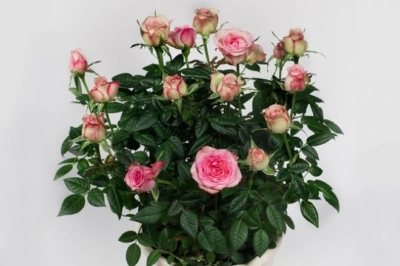

Fans of growing roses on the windowsill will not be able to pass by such a variety as the Cordana rose. The plant is very capricious in care and requires strict adherence to certain conditions that ensure its growth and development at home. Those wishing to acquire some of the varieties of the Cordana rose should carefully study the recommendations for its care and reproduction.
Cordana Mix on a personal plot
Before planting a rose bush, you need to choose a place for it. Ideal is the south-east or south-west side of the site. Flower care should be as follows:
- Before planting, the soil is well moistened, a nutrient composition is added.
- After planting, the plant is carefully observed. They fertilize and loosen the earth in time.
- The roses are periodically sprayed with settled water at a comfortable temperature.
- Before wintering, all the buds are cut off. The remaining cuttings are used for further propagation. The bushes are covered with sawdust, wrapped in burlap or covered with materials intended for this.
History of origin
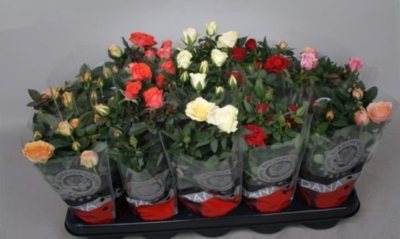

For the first time about the rose of Cordana conspiracies in the 19th century. In 1810, European countries brought dwarf tea roses from China. The flower growers really liked these varieties, they were especially impressed by their size.
A little later, breeders began to cross dwarf tea roses with other plant varieties of this genus. The name Cardana miniature roses were given in honor of the florist-breeder, who was engaged in breeding them by Wilhelm Cordes.
Varieties
There are quite a few types of Cordana roses, each of which has certain characteristics.
Classic
It is a compact plant with small flowers up to 5 centimeters in size. It is characterized by medium-sized leaves and not too lush bushes.
Grande
Flowers of this species reach 8 centimeters. Moreover, the bush itself and the leaves are large in size.
Mini
This is a small plant that does not exceed 35 centimeters in height. It is characterized by small flowers with a diameter of no more than 3 centimeters. The petals can be orange or red.
Mix
This is the most popular plant species. The bush is compact. During the flowering period, it is covered with many flowers.


Winter hardy
This category includes 2 varieties - Impala and Kiss.The first is characterized by light apricot flowers, the second - cherry red.
Subsort of indoor plant in a pot
There are several sub-varieties among the Cordana roses. The most popular ones are described below.
The most popular is Mini Caliber... It forms small flowers reaching a size of 3 cm in diameter. The petals are painted bright orange-red. Blooms profusely until frost.
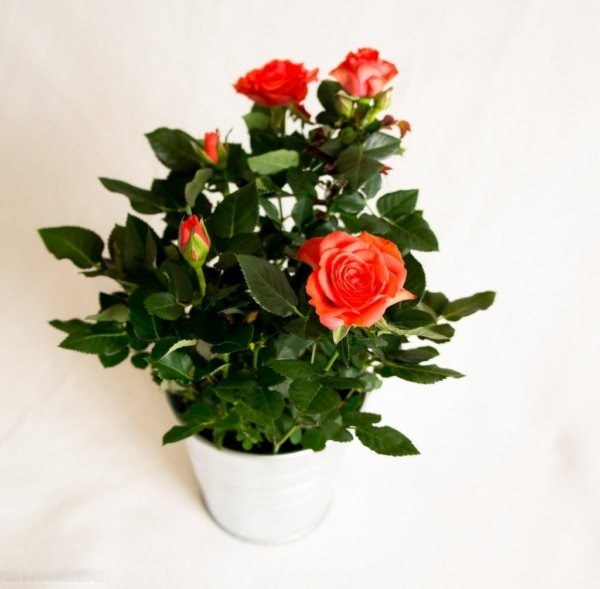

The Cordana Mix variety is considered the most famous and demanded. Plants form a large number of flowers. It is resistant to bad weather, but does not like excess light and water. Flowering lasts about six months.
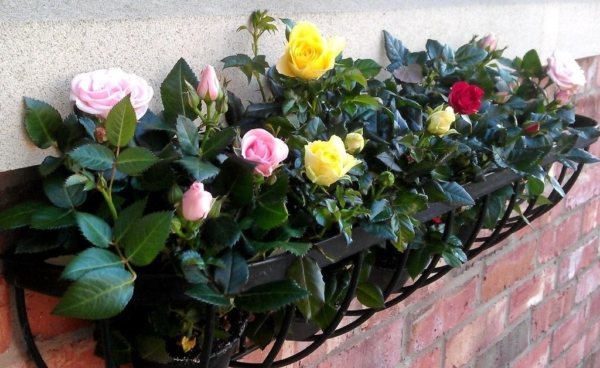

You can find out more about the varieties of the lovely mix rose and the peculiarities of its cultivation here.
The best
The best varieties of flowers include:
- Pearl... It is characterized by creamy white flowers. The flowers are goblet.
- Ballet... It is named so due to the fact that the fully open flower is very similar to a ballet tutu in a rich bright pink color.
- Magnolia... Forms single creamy pink flowers. The outer petals are pale green.
- Pasadena... It is considered a classic rose variety, but in miniature. It blooms with red flowers, forms a large number of petals, and is resistant to diseases.
Winter hardy
Despite the fact that the Cordana rose very badly tolerates low temperatures, there are varieties that have good winter hardiness:
- Impala... It blooms with delicate apricot flowers, resistant to both bad weather and a variety of diseases.
- Kiss... Forms flowers singly, blooms cherry-red.
Care rules
Rose Cordana mix, bought in a store, will feel unwell for the first two weeks in a new place, it may even shed the leaves, but then it adapts if the owner knows how to care for it. The rosette loves sunlight, moderate watering, fertile well-drained soil. It blooms luxuriantly and for a long time, so regular feeding will not interfere with it, balanced fertilizers can be bought in the store, diluted and applied, preferably simultaneously with watering after two weeks if the soil is depleted, or less often if the soil is nutritious enough.
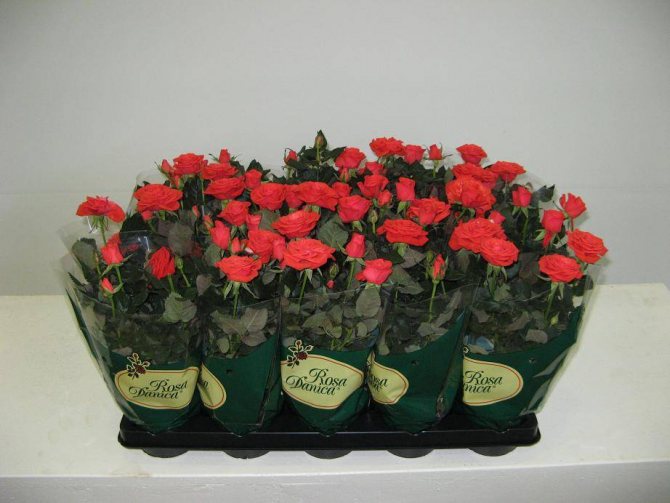

Like most of its relatives, the Cordana rose does not like excessive heat, so it can be shaded in sultry midday hours, watering is increased as the air temperature rises, and in the evenings it can be sprayed with clean water. The ground under the bushes is mulched to prevent overheating of the roots. But with watering, it is important not to overdo it, if waterlogging is allowed, the roots can rot, and fungal diseases can be provoked. After watering, you need to loosen the ground around the bush, remove weeds in time, prevent thickening, you can carry out sanitary pruning all summer, remove branches that prevent others from being illuminated and ventilated. Plant residues should not be left near the bushes. Aphids, spider mites, fungal diseases traditional for roses may well disrupt her quiet life, so that this does not happen, you need to adhere to the rules of agricultural technology, carry out preventive spraying.
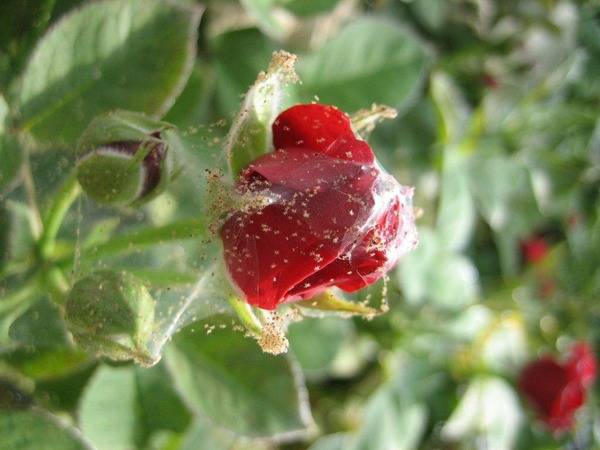

The same care is provided at home if the flower is grown in a pot. Soil for roses, as well as a composition for dressing, can simply be bought in a specialized store. The place should be bright, with fresh air, but no drafts. In summer, roses are usually taken out to the balcony, and the rest of the time it is advised to keep it on the southern windowsill. Rose Cordana, of course, loves a lot of sunlight, but a comfortable air temperature for her should not exceed +20 degrees, so you will have to cover her from direct sunlight if she gets very hot.The limited soil by a pot may require more frequent feeding, but it is also not worth overfeeding the plant, the state of the greenery will show if there is a lack of any nutrients.
On the street, the flower winters well under shelter, and at home the rose can be arranged a short, only one month, rest period, although many growers maintain equally comfortable conditions all year round, enjoying the blooming of a rose without scent.
For rest, the rose is cut, leaving several buds on the shoots, and removed to a cool room with a temperature of about +8 degrees. For the rest period, feeding is canceled altogether, and watering is reduced to a minimum.
Step-by-step instructions: how to take care of your home after purchase?
Caring for a Cordana rose is a laborious and difficult process. If you want to acquire such a flower, you need to study all the nuances of caring for it in as much detail as possible. Otherwise, the plant will quickly die.
Choice of capacity
The first thing to do after buying a flower is to transplant it.... To do this, you will need to select a suitable container. It is worth purchasing a pot that is 5-7 cm higher in height than the previous one, and 2-4 cm in diameter.
If the pot is new or made of ceramic, then it is pre-soaked in hot water for 2-3 hours. A previously used pot is thoroughly cleaned of soil residues using a stiff brush.
What should be the soil?
The miniature rose is demanding on the soil. It is recommended to purchase a special composition designed for roses.... If there is no desire to make the soil on your own, then this will require sod land, humus and sand to mix, observing a ratio of 4: 4: 1.
Landing
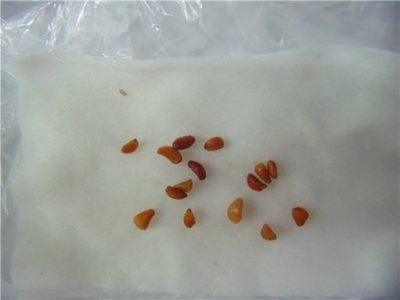

Growing a rose from seeds is a process that is difficult even for experienced growers. But those who wish to try their luck and grow a Cordana rose with seeds should know that the conditions under which the seeds germinate are a temperature of 18 degrees and lighting for 10 hours a day.
An additional measure to promote seed germination is stratification: placement of seed for several months in low temperature conditions. For such a procedure, you will need to place the seeds in a gauze piece of cloth soaked in hydrogen peroxide and send them to the refrigerator for several months.
Temperature in winter and at other times of the year
The optimal temperature regime at which the rose feels good varies within 15 degrees. The temperature regime must not be allowed to rise above 22 degrees... In winter, the most comfortable temperature for plants is 5-8 degrees. If it is necessary to artificially enter the plant into a dormant state, then the temperature is gradually lowered to 10-12 degrees.
Watering
Water it regularly, but in moderation. The soil should be slightly damp between spills. Only drying the top layer is allowed. In no case should excess moisture be allowed in the pot, as this will lead to decay of the roots. Water the rose from above using only warm, settled water. Stagnation of water in the sump should not be allowed.
Top dressing
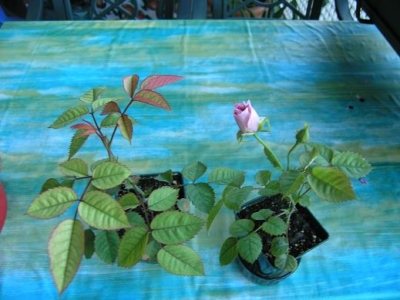

It is worth starting to apply fertilizers only after 3 months from the date of purchase of the plant. It is worth withstanding such a period of time for the reason that fertilizing immediately after buying a flower leads to the formation of an excess amount of salts in the soil.
Plants are fed in the spring and summer, in the spring they are fertilized with nitrogen-containing fertilizers, in the summer - with potassium-phosphorus fertilizers. You can purchase a specialized fertilizer for roses. The frequency of fertilization is 1 time in 7-10 days.
Pruning
Pruning is carried out in the following cases:
- In the spring diseased, damaged roots are cut off. This is done during the transplant.
- In the summer cut off flowers that have withered.
- In autumn you need to cut flowers and inflorescences. Such an event has a good effect on the overwintering of the plant.
Transfer
Cordana rose is transplanted immediately after purchase... In the future, you need to transplant the flower once a year. To transplant, you will need to do the following:
- water the soil abundantly in the pot for easy extraction of the plant in the future;
- pour a drainage layer into a new container;
- carefully remove the rose from the pot, without violating the integrity of the earth clod;
- place in a new container and fill in the missing amount of soil.
There is no need to water the rose after transplanting, since the excess amount of moisture is distributed throughout the soil.
Content of a rose at home
The plant is propagated by cuttings. Twigs with multiple buds are chosen. The lower part of the shoots is cut off at an angle of forty-five degrees. The prepared material is placed in a glass filled with water. After a couple of weeks, roots are formed. Sprouts that have reached two centimeters are planted in separate bowls. In order for the plant to be healthy, the following conditions must be maintained:
- Lighting. The plant is very fond of sunlight. Therefore, it is better to place your pet on the windowsills of the southern windows. However, when the scorching rays of the sun are especially active, the rose should be covered from them. This will save the foliage from burns. During the short daylight hours it is recommended to supplement the lighting.
- The most comfortable temperature regime for Cordana Gigi rose is from +15 to +20 degrees.
- The room where the plant is located must be ventilated more often so that the air circulates freely and does not stagnate. In this case, the rose should be protected from drafts. In the summer, the beauty is taken out to the balcony, loggia, veranda.
- First, the soil is checked for moisture by testing it with your fingers. The irrigation process is carried out only if the upper layers of the earth are dry.
- Water the plant regularly, abundantly. It is best to do this in the early morning or late evening. You can't take cold water. This can provoke a disease such as powdery mildew. Drain excess water accumulating in the pan. It is not recommended to flood the plant. Waterlogging causes decay of the roots, which will lead to the death of the pet. But do not dry out either.
- Fertilize. In the spring - nitrogen-containing fertilizers. In the summer - potassium-phosphorus compounds. It is recommended to add useful mixtures three to four times. At the end of the season, you can add superphosphate, saltpeter.
- In the fall, it is imperative to prune roses. Young shoots are cut along with adult branches. Three to four buds are left. All weak, crooked shoots are also removed.
- In winter, a period of dormancy begins. The rose almost stops flowering, and also loses some of the leaves. The plant is given rest. Leave in a cool place. With the onset of February, they return it back. The whole cycle is repeated anew.
This technique of growing roses allows them to bloom in about a month. Caring for a cordana rose after purchase has some features that must be observed. You can grow a rose from seeds. But this will be a longer process.
How to propagate?
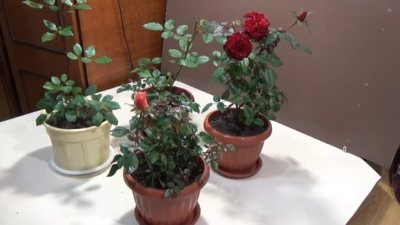

For the propagation of a flower, the cuttings method is used. The optimal time for breeding is May-August. Twigs are cut, leaving three to four buds on each. The lower cut of the stem is made diagonally, adhering to an angle of 45 degrees, the upper one is left straight. Leave the cut stems in water with a little growth stimulant.
Periodically you need to add water and add a growth regulator... After the roots appear on the cuttings, at least 2 cm long, they can be transplanted into pots.
Conditions for rose growth
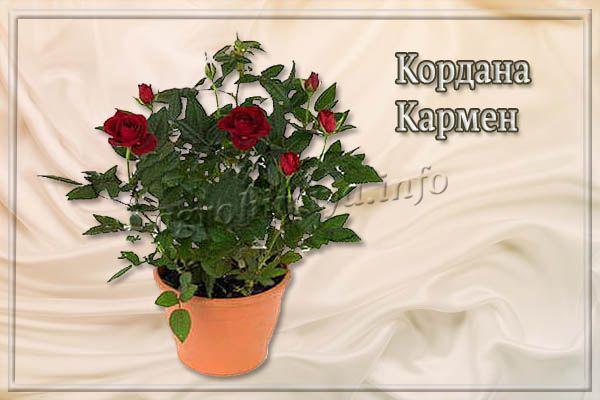

Rose Cordana red Carmen
So that the Cordana rose can develop correctly, it is provided with good conditions for growth.
- After the purchase, the first 2-3 weeks, the plant will be very sensitive. If you do not provide quality care and normal growth conditions, it can shed its leaves, stop blooming (if it bloomed in the store), and start to get sick.But, if you immediately find a good place for her and provide her with attention, in a month she will release buds.
- Ideal temperature for this rose +15, but its increase up to +22 degrees is allowed. In winter, it is best to keep the temperature within + 5 ... + 8 degrees Celsius.
- Lighting should be abundant. Rose Cordana loves light. It is best to place the culture on a windowsill on the south side. If this is not possible, you need to put a lamp, and turn it on so that the rose has enough light.
- Air... Culture is very fond of fresh air. So the room must be regularly ventilated, and in the summer you can even transfer the rose to the balcony. The main thing is to ensure that there are no drafts and cold winds.
- Humidity should be high. To achieve this, a humidifier is installed in the room or a container of water next to the pot. In winter, you can increase the humidity by placing a wet towel on the battery.
Diseases and pests
Rose Cordana is susceptible to various diseases and damage from pests. The main pests on the rose are:
- Mealybug... Leaves lumps in appearance resembling cotton wool in the leaf sinuses.
- Shield... Barely noticeable formations on the stems of the plant.
- Whitefly... The larvae are left on the back of the white leaves.
- Thrips... The appearance of white or gray streaks is observed from the top of the sheet.
- Aphid... It is impossible not to notice the leader.
- Spider mite... A mealy plaque appears from the bottom of the leaf, a cobweb is present, the leaves turn white.
Diseases are isolated:
- Spotting. Black or white spots on the leaves.
- Powdery mildew. It appears on the leaves as a bloom.
- Gray rot. It looks like a gray fluff.
To get rid of diseases, they are treated with fungicides., for example, Hom, Topaz, Skor, Colloidal sulfur.
Despite the fact that it is quite troublesome to care for and grow the Cordana rose at home, many still choose this plant for a reason. Beautiful, lush and long flowering is good news. By adhering to the recommended care for the Cordana rose, there will be no problems with the flower.
To make the flower bloom better
Caring for the Cordana rose mix at home for its abundant flowering consists of pruning withered flowers. By performing such manipulations, it is quite possible to stimulate long flowering. If you do not prune, seeds will ripen in wilted flowers, which will draw the strength of the plant and you can not wait for lush buds.
Cut flowers that are not withered can be used as a cuttings for propagation of roses. Only in this case there should be at least 3 buds on the handle.
How to properly care for this rose
Take care of the flower after purchase follows in a special way, taking into account all the features of this plant. This miniature rose has many flowers and the greenery is lush. Coloring can vary, making this beautiful plant an especially adjective for those who love miniature flowers.
It grows only up to thirty centimeters, but in appearance it does not stand out at all among traditional roses. One of the clear differences between this plant and other roses is that it does not smell.
However, this feature makes it the best gift for allergy sufferers. These miniature beauties bloom from May to October. They can be purchased in a pot of 3-4 bushes.
Before purchasing this plant, you need to carefully consider the bushes... The leaves should be smooth and shiny. They should be free of any stains that are a sign of a bacterial or fungal disease. If the leaves are yellow, then this means that the plant was poorly looked after.
You should also make sure that there are no insects anywhere.In addition, it is important that the flower is healthy, without any signs of wilting.
A flower transplant must be considered before buying.... Also, this procedure is carried out as needed. It is believed that in the phases of the moon's growth, the transplant will take place in the best way. The land where the flower was earlier is moistened in advance. This is necessary so as not to damage the roots.
You should hold the bush a little, turn the container over and shake out a little everything that is there. In the pot where the plant will be after transplanting, it is required to make either holes for water to escape or drainage from expanded clay before the procedure begins. They take special soil, specially designed for this.
You can choose a mixture for growing these plants at the flower shop.... When placing soil in a pot, remember to leave 2.5-3 cm from the edge of the pot, slightly compacting the soil. The first 2-3 weeks will be the most difficult for a rose.
Due to the difficulties of the first weeks of adaptation, the flower can throw off the buds and leaves, and completely. However, if you take due care and do not leave the flower unattended, then soon it will regain its former splendor and be able to bloom.
In order to completely protect the plant from pests that may be on it, you should rinse your purchase with warm water under the shower and use a special universal remedy. For transplanting, they usually take a rose that is not yet blooming or is about to finish blooming. It is better to use the transshipment method for this purpose. In this case, the roots will not be damaged.
It is important to use soil with good drainage, nutritious... Finally, when the plant is planted, a growth promoter should be used for treatment. You need to plant a rose if there are several bushes in the pot. In order for a rose to always look beautiful and well-groomed, you need to remember that it likes the sun's rays, but leaf burns are possible.
So it is better to put a flower pot where the windows facing south are located. But when the sun is at the limit of activity, you should protect the leaves from burns.
Rose Cordana prefers temperatures between 15 ° and 20 ° C. In the rooms where the flower is located, you need to ventilate, but so that there are no drafts.
It is necessary to water the rose regularly and with plenty of water.... But moisture should not stagnate, so you should get rid of excess liquid by draining it from the pan. Before doing this, you should check the moisture content of the earth with your finger. Also, you can not bring the soil to acidification.
For irrigation, you need to take exclusively settled and warm water. You should know that with proper watering, the rose will constantly bloom with a large number of flowers. Despite the fact that you can find in different places a description that spraying is necessary for a given flower, experts believe that, on the contrary, it can harm the plant.
If the flower is watered sufficiently, the rose will not need spraying. Top dressing is also necessary for the rose. Traditionally, liquid complex fertilizers are used to water the plant about once a week.
What kind of care is required in the future
In the future, it is required to carry out such procedures:
- do not forget about regular watering;
- create the required temperature regime;
- choose the right lighting;
- always apply top dressing;
- get rid of pests;
- transplant if necessary.
How to properly care for a miniature rose in the garden
Cordana Mix for planting in the garden... Such a wonderful plant can also be planted in the garden. But to care for a flower mix, you should know its main features.
Before planting the Rose of Cordana Mix, it is necessary to correctly choose the plot of land where it will grow. It is best to plant Mix on the southwest or southeast side of the plot.
In this case, the soil should be perfectly moisturized and flavored... After planting in the first season, it is necessary to pay a lot of attention to the flower, loosen the soil and fertilize it. If it is dry in summer, then it is necessary to constantly water the flower, since the rose needs frequent watering.
It is also advised to use warm water to spray the bushes from time to time. It is necessary to use the dressing for Rose Cordana Mix especially carefully. You cannot fertilize the Mix when the buds have just begun to appear and during the flowering period. Before the beginning of winter, you should cut the flower buds, with which the rose can be propagated.
Cuttings are made only by shoots with three buds and a lot of them. After cutting, the bushes are covered with burlap, a material that is used for this purpose, or sawdust.
Rose Cordana Mix grows well at home. For this purpose, you should only cut the bushes off Mix and regularly water them with warm water.
Because of what pests appear, and the leaves can turn yellow:
- too little or too many nutrients;
- downy mildew infection;
- stress after an illiterate transplant;
- chlorosis (leaves are covered with yellow spots)
Plant adaptation
Before purchasing a rose, you need to carefully examine it... The foliage of the plant should be smooth, firm, shiny. Dark spots are signs of bacterial, fungal diseases. Yellowing of the leaves indicates poor care. And you should also make sure that there are no insects. After purchase, you need to start taking care of the cordana rose mix immediately. It should be especially careful in the first months.
After the plant has been brought home, it should be washed under a warm shower. Then treat with special preparations. This will rid the pet of all kinds of pests, as well as prevent the appearance of new insects.
The most difficult period for a flower is the initial two to three weeks.
You need to prepare for the fact that he will drop all the buds, leaves... Rose has a hard time getting used to a new place.... But attention and care will bring the plant back to life. In about a month, the bush will again please with its flowering. It is preferable to choose a non-flowering or pre-flowering plant. Then it can be immediately transplanted into a pot of slightly larger diameter.
The best way is transshipment. This way, the roots will remain intact. Then add a growth stimulant. If there are several bushes in the flowerpot, they should be planted.
Reproduction
In spring and summer, the miniature rose produces many cuttings. With their help, decorative culture is propagated. The shoots are cut and placed in water with any root stimulant. After a week or two, roots hatch on them. When their length reaches several centimeters, the shoots are placed in the soil. Seedlings are set aside in the shade, periodically watered and fed. Usually it actively grows and produces buds in the first months after rooting.
The video shows in detail the process of pruning a room rose and preparing cuttings for propagation.
Tags: cordana, mix, purchase, after, rose, care
About
«Previous post
Useful video
We offer a visual and informative video about the Cordana rose:
If you find an error, please select a piece of text and press Ctrl + Enter.
Home flowers saturate the home with energy, life spirit and perfectly complement the interior. Looking after plants must be competent and enjoyable, otherwise it will be difficult to achieve the desired result. There is no need to be afraid that this is too tricky and troublesome business, you just need to want to see beauty nearby, so that human hearts are filled with magnificent emotions.
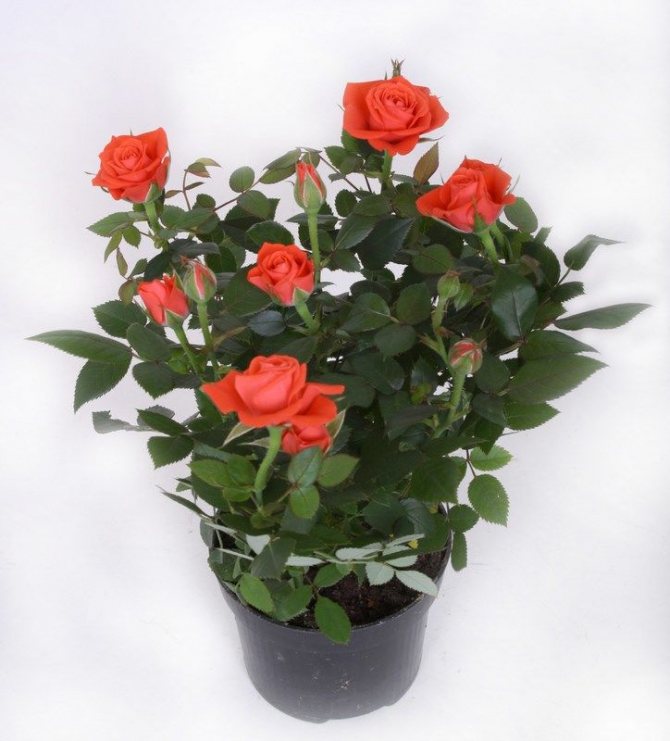

"Queen" of flowers
It is wrong to think that roses are garden plants, they grow well at home on the windowsill. Rose Cordana, with careful care, will give many shoots and will delight others with its flowers for a long time.Taking care of a plant is simple - it is enough to purchase the necessary preparations for its processing, and then it is a matter of technology.
Top dressing
Once a week, traditionally experienced growers use liquid mineral fertilizers to stimulate the growth of their green pets. An inexpensive Bona Forte preparation is quite suitable for this. It is bred in plain water and alternated between root watering and foliage spraying through a spray bottle. During the period of winter dormancy, the plants completely cease to fertilize.
For miniature roses, potassium-phosphorus mixtures are suitable in the fall, nitrogen fertilizers in the spring. Many flower shops sell dry powdered chicken manure and manure. It is diluted in plain water and the flowers are watered a couple of times a month. A large amount of potassium, calcium, magnesium, phosphorus is found in banana skins. They are soaked for several days in clean water or dried in the oven, crushed and added to the ground.
Bloom
Flowering is an important period in the growing season of a plant that requires special attention. It is important to properly care for the rose in order to achieve lush and beautiful flowering.
When and how does it bloom?
Cordana blooms in October-May... The duration of this period may vary depending on the correct care. Flowering can be achieved even in winter, but this will require creating special conditions, simulating the climate of the summer season.
Care before and after the appearance of buds: features
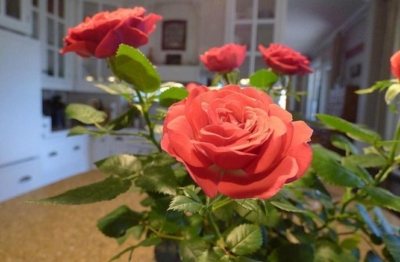

You need to take care of the rose throughout its life, regardless of the phase of growth and development.
The only feature of the care after flowering of the Cordana rose is the need for careful pruning.
When the flowering ends, you need to prune all flowers and inflorescences of the plant.
What if there are no buds?
If the Cordana rose does not want to bloom, then the reason may be either improper care or the presence of any disease or pest. To understand why Rose Cordana does not bloom, you need to examine the flower and find out the reason.
Possible growing problems
When growing Cordana roses, many growers face various problems. To cope with them, you need to establish the reasons for the appearance.
Falling foliage
Leaves fall off if the plant needs nutrients. Also, the cause is the wrong watering regime or the development of diseases.


Yellowing of leaves
Pest attacks, excessive watering, a deficiency of useful elements in the soil, and rotting of roots lead to yellowing of the leaves.
Leaves and flowers wither
These problems are associated with exposure to drafts, the use of cold water for irrigation, fungal infections, and pest attacks.
Fertilizing and watering a flower
After transplanting, the plant grows very quickly. The first buds will appear in about a month. It is better not to water Cordana with fertilizer yet, let it adapt to a different environment. The rose further requires watering with Bona Forte fertilizer, while according to the scheme, spray once a week, and water the next one. It is better to dilute this product with more water than is written in the instructions, since it is quite strong. Caring for a rose is simple, you just need to adhere to these recommendations. Water the rose as needed, if the soil is dry, and if it is wet, then it is better not to rush with water.
The flower does not like overflow. On average, this takes about four days. Cordana loves spraying every day, especially when the air is dry. In order not to forget and to do this regularly, you can keep water next to the plant. Rose loves sunlight, so her place is on the windowsill. Keeping an eye on the growth of a flower is pleasant. Once a week, feeding with phytoverm will also strengthen the roots.
In the winter period of time, the flower does not need to be fertilized, let it better rest from its rapid growth, like all plants on the street. Cordana should gain strength for the next flowering. Leaving is best intensified in spring and summer.
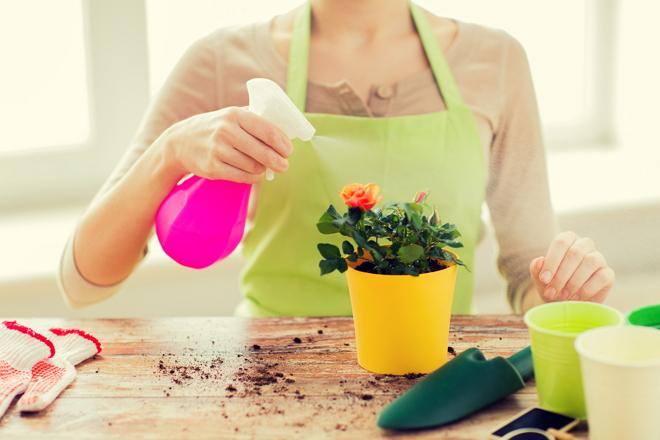

Spraying the plant
And a little about the secrets of the Author
Have you ever experienced unbearable joint pain? And you know firsthand what it is:
- inability to move easily and comfortably;
- discomfort when going up and down stairs;
- unpleasant crunching, clicking not on their own;
- pain during or after exercise;
- joint inflammation and swelling;
- unreasonable and sometimes unbearable aching pain in the joints.
Now answer the question: does this suit you? How can you endure such pain? And how much money have you already "poured" on ineffective treatment? That's right - it's time to end it! Do you agree? That is why we decided to publish an exclusive interview with Oleg Gazmanov, in which he revealed the secrets of getting rid of joint pain, arthritis and arthrosis.
Features of the
The rose is distinguished by its remontability - the ability to bloom repeatedly and for a long time. All roses of this variety are small in size: miniature (30-50 cm) or patio (50-65 cm) and a wide variety of colors.
Reference! Hybrid varieties are bred taking into account different climatic and soil conditions, so experienced gardeners manage to grow a flower not only on the windowsill, but also in their gardens.
Each subgroup and sub-variety of roses mix is based on certain varieties of roses, we can say that the mix is a cloned miniature rose.
Detailed description of the potted plant "Cardana"
Rose of Cordana is a line of different varieties of miniature roses. They are characterized by a long flowering period, a wide variety of flower colors.
Rose Cordana grows in bushes, albeit small... The caste is found as a narrow pyramidal shape, cancer and spreading. The plant can reach a height of 35 cm. Flowers are formed singly or in inflorescences, depending on the variety of the rose. The flowers have a classic shape and color from white, cream, pink, yellow to red and purple.
Description of the variety
- A small plant, the stem of which reaches ≈ 30 cm. Leaves are of a deep emerald color. Buds of a classic form for roses. The four main colors of this variety surprise with a variety of shades: white, yellow, red, pink. 5-9 flowers bloom on the bush.
- The flowering period of the variety is 6 months. Rose Cordana mix pleases with the appearance of new buds from late spring to mid-autumn. The flower does not like high temperatures; in direct sunlight, it can die.
- These roses delight the eye in flower beds, gardens, flower beds. Looks spectacular in curbs and hedges.
- A miniature and graceful rose Cordana mix will be a bright decoration of any windowsill in a house, apartment or on a balcony. Another feature makes this flower attractive for home breeding.
- This variety does not exude the characteristic rose aroma, so even people with allergies can grow it.
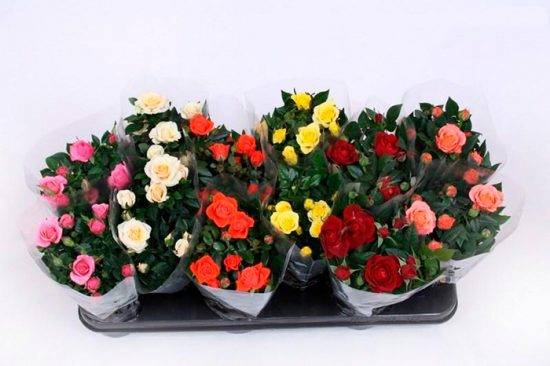

What is the difference from other species?
The main distinguishing feature of this plant variety is the ability to plant it both indoors and outdoors. It is also worth mentioning the miniature size of this rose. Thanks to this, flower arrangements look very delicate and neat.
Reference! The advantage of this flower is that it has no aroma, which means that it is suitable for growing in those rooms where allergy sufferers live.
The described plant has no sub-varieties. It is available in only a few colors.

